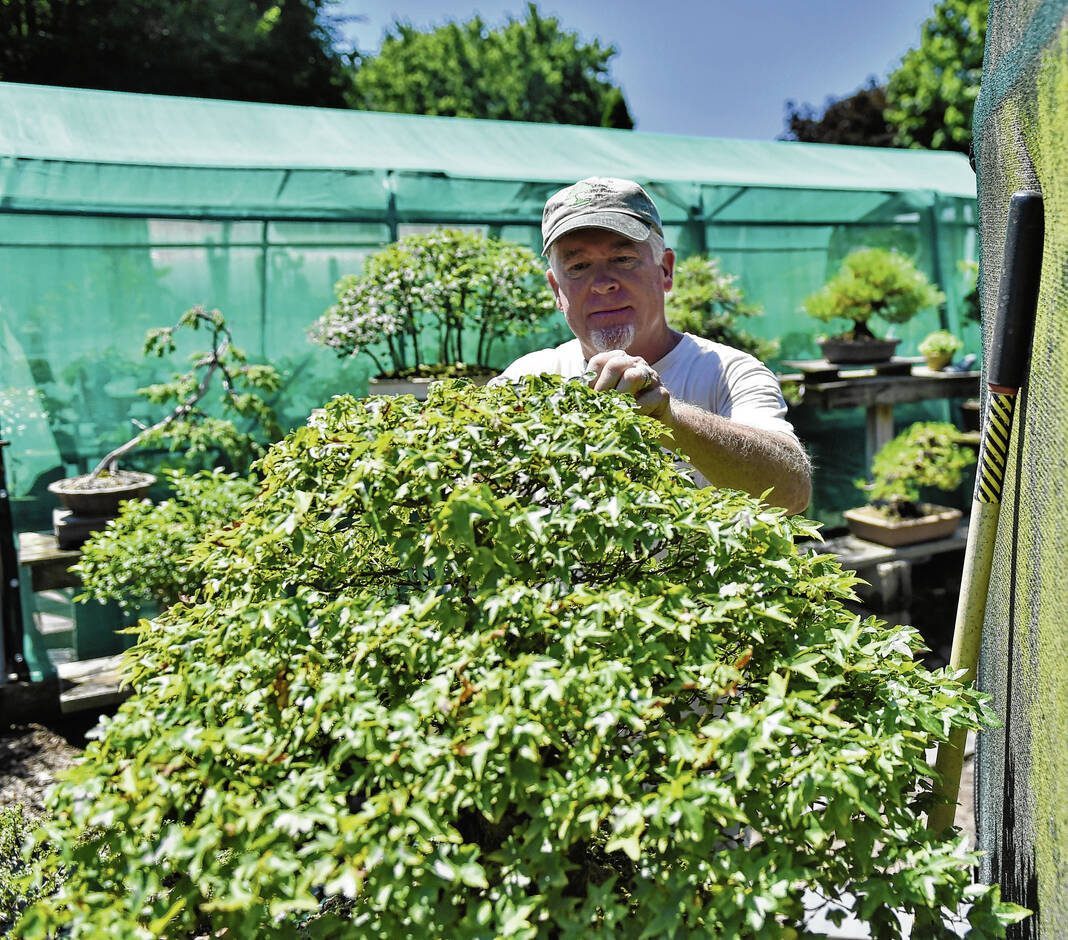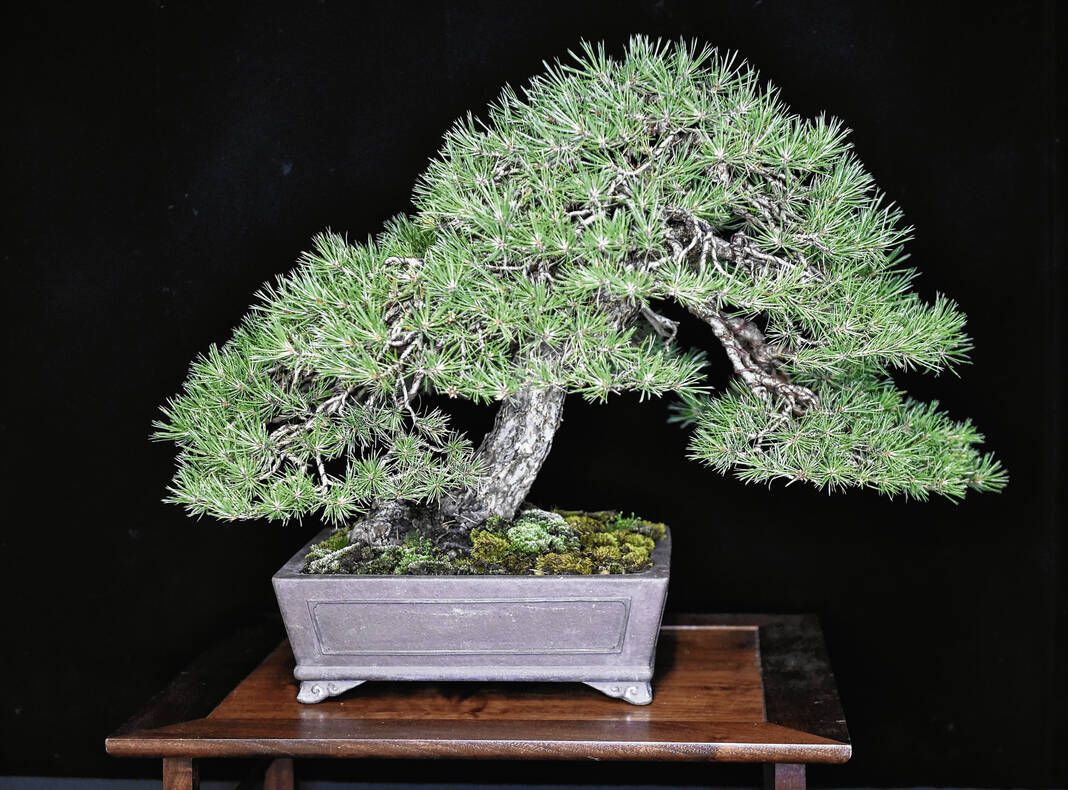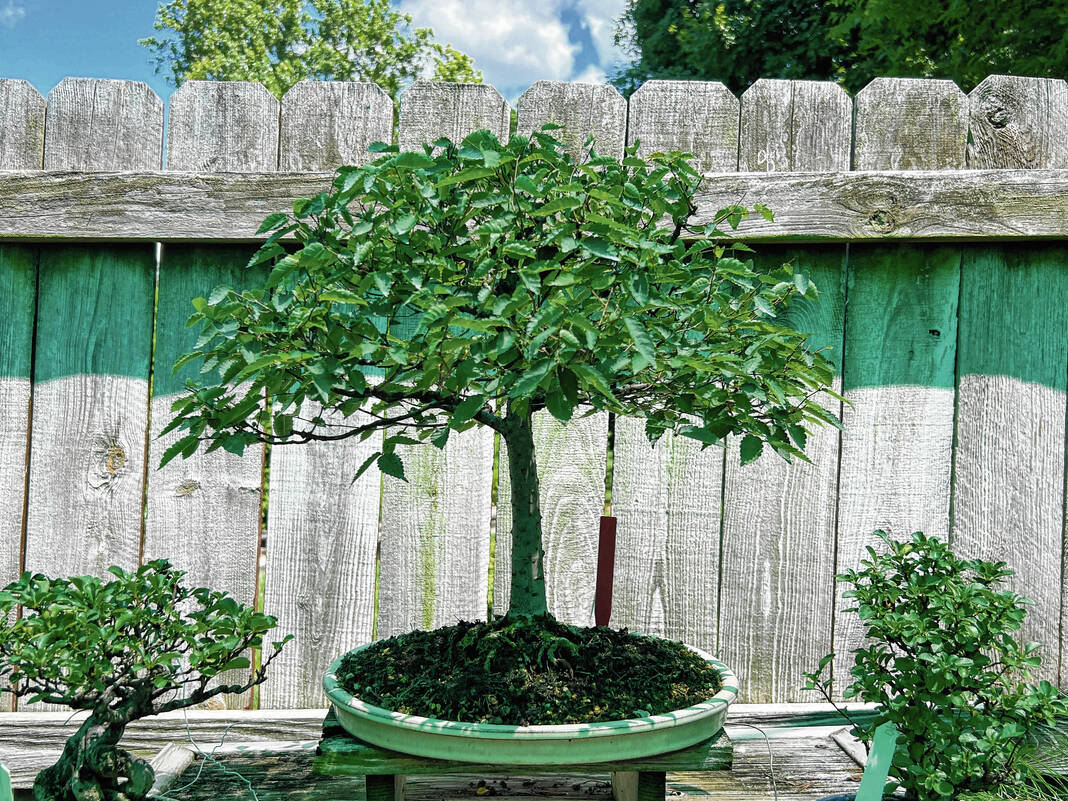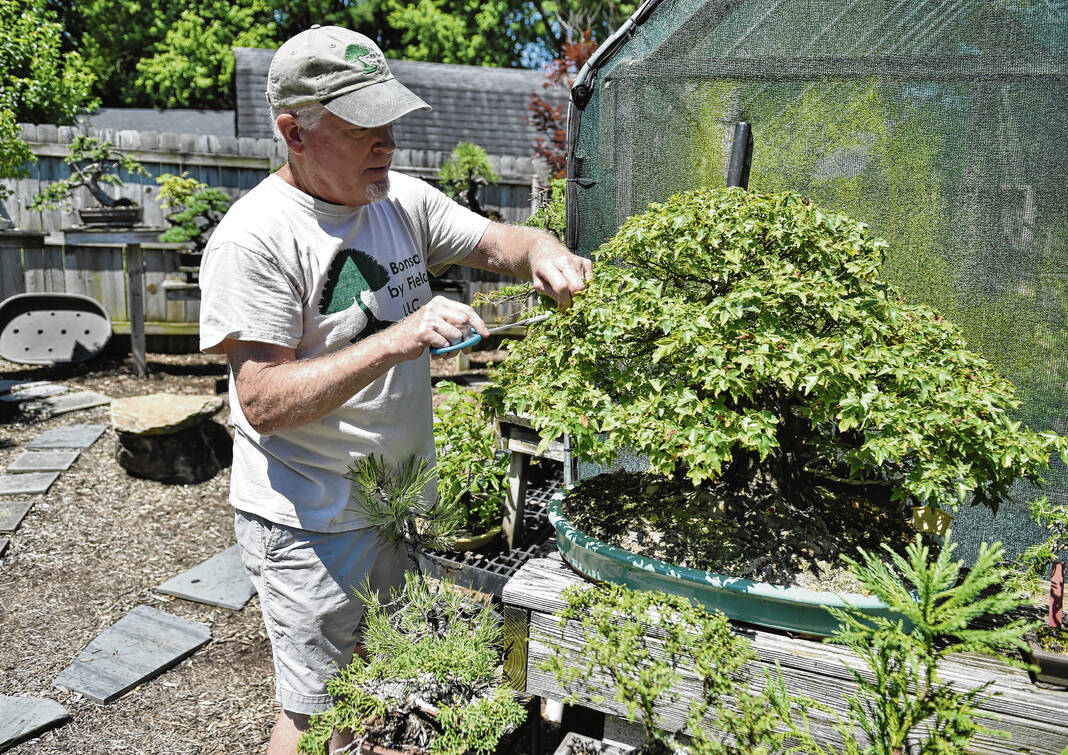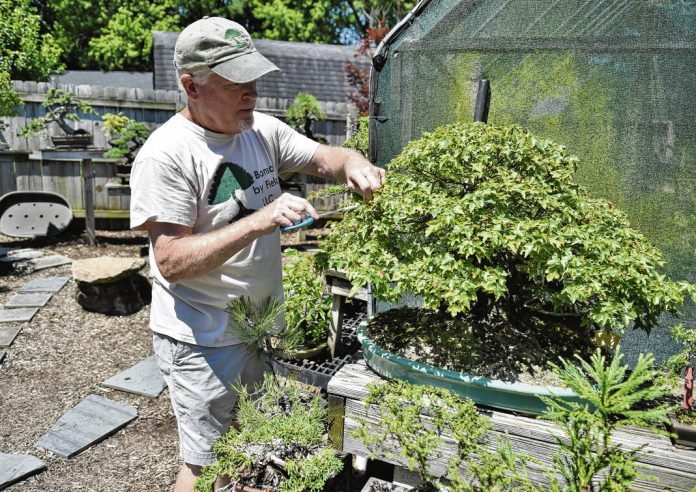
Mark Fields, a Center Grove-area resident, trims one of his bonsai trees in his backyard on June 27. RYAN TRARES | DAILY JOURNAL
Each tiny snip is a work of art.
From his Greenwood backyard, Mark Fields carefully crafts living masterpieces. Potted trident maples, Japanese white pine and cascade style Korean wild rose are shaped, pruned and molded. The plants are in all sizes, and each one possesses different qualities and individual beauty.
But all are connected by the aesthetic and artistic ideals of bonsai.
“I think it’s rewarding just to see how far you can take a tree,” he said. “Take this one — I grew it from a tiny little cutting and let it get tall and trained it over the years. That’s about four years of work right there, and that’s rewarding to me.”
Fields, an award-winning bonsai artist, has spent much of his life studying, practicing and spreading the word about the beauty and power of bonsai. Through his business, Bonsai by Fields, he performs demonstrations, lectures and workshops using a wide variety of trees, while also vending at major exhibitions throughout the United States.
Like the slow-growing plants he works with, Fields’ joy is in the gradual evolution of the creations over time.
“It’s definitely a passion, and you have to have patience for it. It’s not instant gratification,” he said.
Bonsai is the art of keeping trees and shrubs in containers. The practice developed in ancient Asian cultures, originating in China and developed by the Japanese. Practitioners spend hours manipulating needles, leaves, branches and other aspects of the plants to maintain a particular look.
A variety of species are used in bonsai, from more traditional pines and trident maples to unexpected varieties such as yew and lantana. Only Fields’ efforts in his nursery prevent them from growing into fully-formed trees.
“It’s a common misconception that people have — that bonsai is a certain type of tree. It isn’t, it can be any type of tree,” he said.
The trees all tell different stories. Fields pointed out different creations and their origins: a black pine base with a white pine grafted on to it he created 12 years ago, a Chinese elm he got from a nursery 30 years ago, a ficus that has gripped around a small rock.
“It’s every day I’m out here. You can see, trimmers at the end of every bench. I trim constantly; you have to keep things trimmed back,” he said. “Most of them I try to keep exhibition quality.”
Fields first started his passion for bonsai when he was 9 years old. When he was growing up in Indianapolis, his father worked as a landscape contractor. Often, he would accompany his dad to a nearby nursery.
One day, Fields noticed a few mugho pines that the nursery owner had in the ground. He asked what the owner what he was doing with the trees, and the owner responded he was training them as bonsai.
The first steps of a lifelong journey were made that day.
Fields visited that nursery many more times after that to learn from the owner, who loaned him books to read, showed him how to start and grow plants from cuttings and schooled him on proper pruning and other skills. As he grew older, he continued to practice and learn.
Eventually, Fields discovered a bonsai nursery on the southside of Indianapolis, Mendel Gardens and formed a friendship with its owner, Max Mendel. Mendel would offer free advice and critique on his trees, helping Fields better develop his abilities and eye for bonsai. Through Mendel, Fields discovered the Indianapolis Bonsai Club, which he’s been a member of since 1979, including serving as president from 2009 to 2012.
Though he spent 30 years working in the pharmaceutical industry in Indianapolis, Fields also owned and operated his own landscape business, through which he sold bonsai, pre-bonsai and supplies to other club members. In 2006, he started a website and founded a new business, Bonsai by Fields.
Just as others helped develop his own talents, so is Fields busy passing on the knowledge to a new crop of bonsai artists.
“I do mentor a lot of people. Most of them call me a ‘sensei,’ I’m kind of their teacher, and that’s what they called a teacher in Japan,” he said.
Fields’ bonsai adventures have taken him throughout the world to meet some of the greatest artists working in the recent past. He has either seen in demonstrations, lectures or workshops more than 60 highly respected artists such as John Naka, Mas Ishi, Yuji Yoshimura, Danny Use, Ryan Neil, Masahiko Kimura and Bjorn Bjorholm.
For 4 1/2 years, Fields also served as president of the American Bonsai Society, ending his term at the close of 2022.
He remains an active member of the bonsai community, including helping mentor new bonsai artists along their journey. His backyard nursery is stocked with racks and displays of bonsai, pre-bonsai plants, seedlings, accent plants and much more related to bonsai. Fields also maintains a library of resource information including tutorials and care guides.
For hours each day, Fields spends time pruning, caring for and watering the bonsai in his nursery. Some of the trees are shaped by wires.
“Some of these I grow from cuttings, some of them I grow from trees, some I graft,” he said.
He’s created a rainwater collection system with a 1,200 gallon capacity, pumping the collected water through a sediment filter to remove any debris. Rainwater is slightly acidic, which the trees like, Fields said.
All of the trees get watered at least once per day and may require more based on the temperature.
“I don’t like automatic watering systems. I like to water by hand so I can see each tree individually,” he said.
The nursery is an oasis hiding just out of sight in a Center Grove-area neighborhood. Fields delights in the reaction when people come around the corner of his normal-looking home and find themselves immersed in years of artistic expression.
“You can’t tell from the road — that’s what is nice. That’s the idea,” he said.


